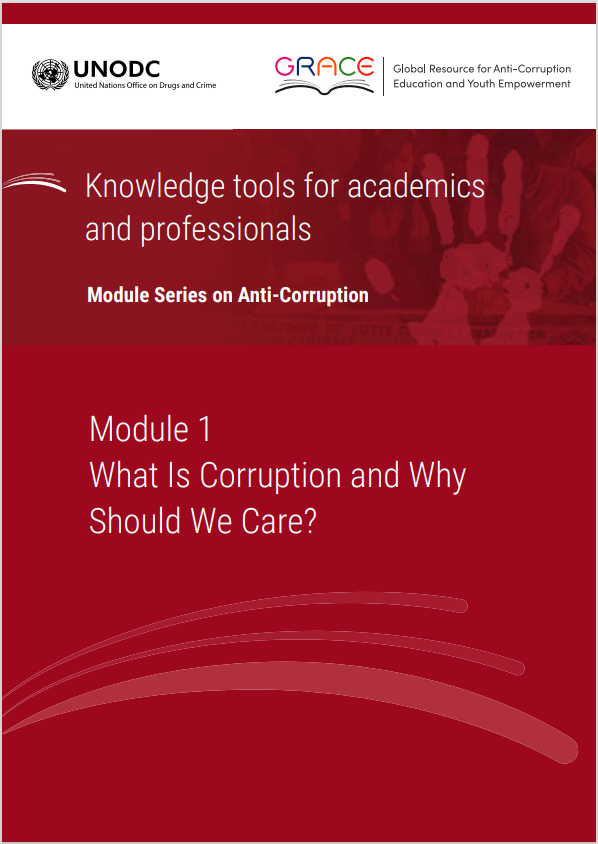This module is a resource for lecturers
Possible class structure
This section contains recommendations for a teaching sequence and timing intended to achieve learning outcomes through a three-hour class. The lecturer may wish to disregard or shorten some of the segments below to give more time to other elements, including introduction, icebreakers, conclusion or short breaks. The structure could also be adapted for shorter or longer classes, given that the class durations vary across countries.
Introduction and Defining Corruption (60 minutes)
- Welcome the students and give a five-minute overview of the class topics and structure.
- Facilitate a discussion about the relevance of corruption to political, economic, legal, ethical, and historical concerns.
- Conduct Exercise 1 ("My story") or Exercise 2 ("I am corruption").
- Discuss the various definitions of corruption while drawing on the students' perspectives expressed in the exercises.
- From students' personal stories about how corruption has affected them or someone they know, begin to write out a typology of effects on the blackboard, and relate those effects to those discussed in the Module.
Corruption's Causes and Effects (45 minutes)
- Conduct Exercise 3 (TED talk "The rise of the super rich")
- Use the TED talk to promote a class conversation about why and how the wealthy use corruption to protect or increase their wealth. Combine with information learned from Exercises 1 and 2 to illustrate that corruption relates to needs, wants, greed, power and abuse.
Different Understandings and Approaches to Corruption (45 minutes)
- Having examined the list of crimes that corruption entails, the general definition, and corruption's effects, it is time to turn to how different disciplines understand the overall phenomenon.
- The lecturer should ask students which approach to corruption they prefer out of the ones they read about (in articles such as Susan Rose-Ackerman's "Corruption: Greed, Culture, and the State"; Cristine Lagarde's "Addressing corruption - openly"; or Robert Klitgaard's "Addressing Corruption Together").
- From this discussion of different approaches, the lecturer could highlight on the chalkboard or in a PowerPoint presentation the great variety of approaches and their basic terms.
- Finally, the lecturer could turn to Exercise 4 in which, based on the various definitions, effects, and understandings examined thus far, students finally record their own, well-informed sense of how corruption ought to be defined and understood.
Measuring Corruption (30 minutes)
- Although measuring corruption is probably not the overall focus of a class based on Module 1, all the material discussed above certainly sets the stage. To measure corruption, you must begin with a definition and a set of parameters for picking up on the things you have defined. This is a basic observation from which a fruitful class dialogue about different measurements could unfold.
The lecturer could lay out the basic catalogue of measurements, talk students through their basic features, and then ask students what, really, is being measured, the pros and cons of each, and so on. The lecturer may wish to give students an overview about what explains why certain countries are ranked at the top and other countries are ranked at the bottom of certain corruption indices. Possible explanations can centre on the different political systems, cultural explanations of corruption (cultures of "fair play" and impersonal rules versus cultures of informal relationships and nepotism), resource-based theories (the "resource curse" in Iraq, for example), legal and institutional theories (pre-existing rule of law, well defined anti-corruption norms, plus independent anti-corruption institutions with enforcement powers).
 Next:
Core reading
Next:
Core reading
 Back to top
Back to top
